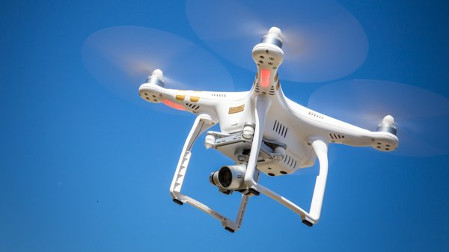FAA Recommends Best Ways to Identify Drones

WASHINGTON—Six months after being chartered by the FAA, the Unmanned Aircraft Systems Identification and Tracking Aviation Rulemaking Committee has submitted a report and recommendations on technologies available to identify and track drones in flight, as well as other associated issues.
The ARC’s recommendations covered issues related to existing and emerging technologies, law enforcement and security, and implementation of remote identification and tracking. Some of the highlights included:
· Direct broadcast (transmitting data in one direction with no specific destination or recipient) and network publishing (transmitting data to an internet service or group of services). Both methods would send the data to an FAA-approved internet-based database;
· The data must include a unique identifier—what drone provider DJI describes as “electronic license plate technology”—for unmanned aircraft, tracking information and drone owner and remote pilot identification;
· Promotion of fast-tracked development of industry standards while a final remote ID and tracking rule is developed, with potential incentives for early adopters;
· The FAA should implement a rule in three stages, with the goal that all drones manufactured and sold in the U.S. that comply with the rule must be so labeled. Should also allow a grace period to retrofit drones made or sold before final rule is effective;
· ID and tracking systems should be coordinated with the existing air traffic control system and ensure that it does not substantially increase workloads;
Get the TV Tech Newsletter
The professional video industry's #1 source for news, trends and product and tech information. Sign up below.
· The FAA should exempt drones operating under air traffic control or those operating under the agency’s discretion; and
· The FAA must review privacy considerations, in consultation with privacy experts and other Federal agencies, including developing a secure system that allows for segmented access to the ID and tracking information.
The ARC reached consensus on most issues, though there were some dissenting opinions, mostly on which drones the ID and tracking requirements should apply.
The ARC was made up of 74 members from aviation community and industry member organizations, law enforcement agencies and public safety organizations, manufacturers, researchers and standards entities involved with UAS.
DJI released its own statement in response to the ARC report:
“DJI supports many of the conclusions in the ARC report, understanding that its limited purpose was to describe the needs of security and law enforcement agencies and to recommend the technologies that could meet those needs,” said Brendan Schulman, DJI vice president for policy and legal affairs in the statement. “There is still an important discussion to come about how to balance government needs and desires with the burdens, costs and privacy invasions that could be faced by drone pilots depending on the actual technologies chosen and how they are implemented. Drone pilots and operators were not well-represented in terms of the number of ARC members, and we feel their interests will be expressed in the future rulemaking process that lies ahead.”
The full ARC report can be viewed here.
